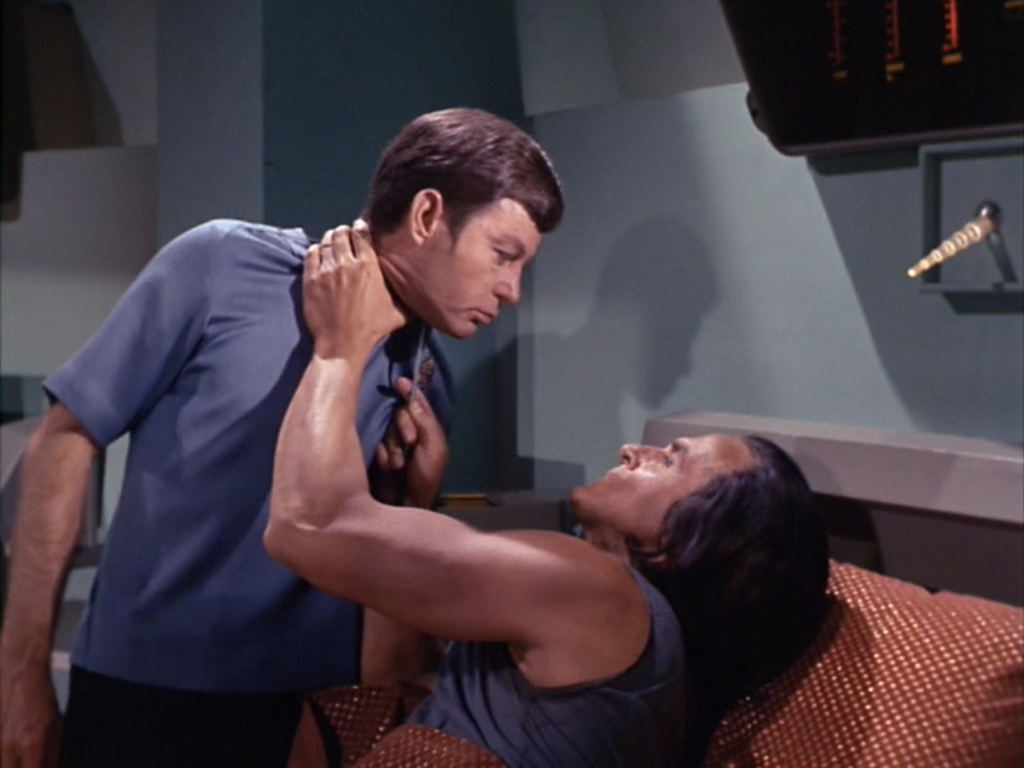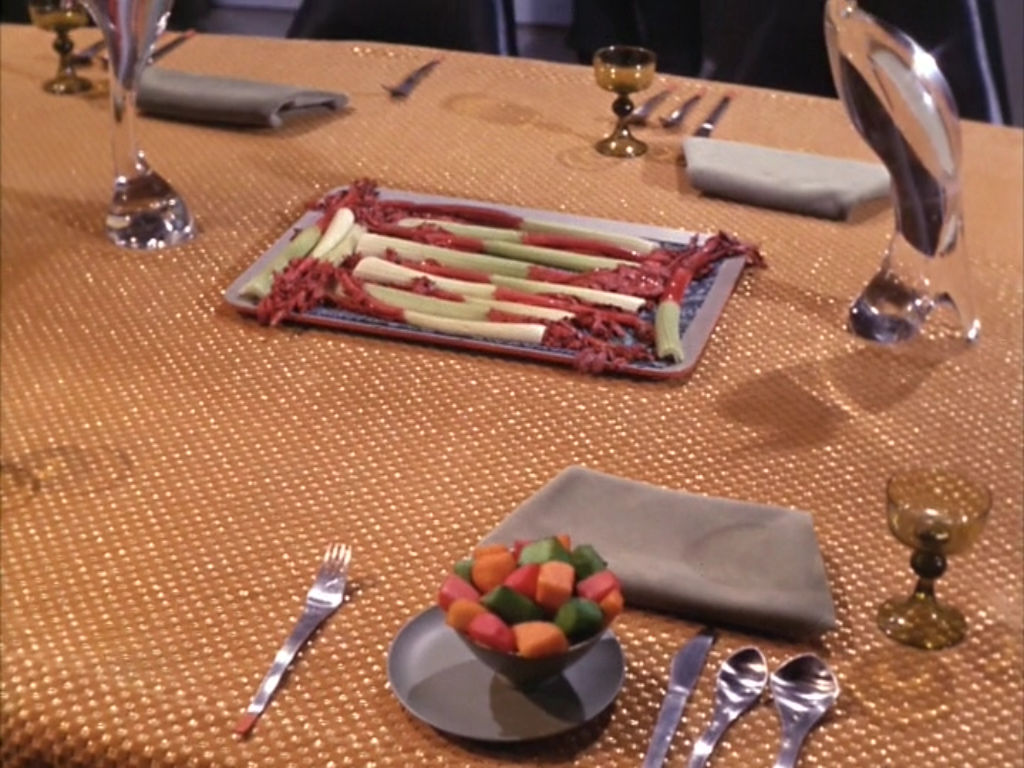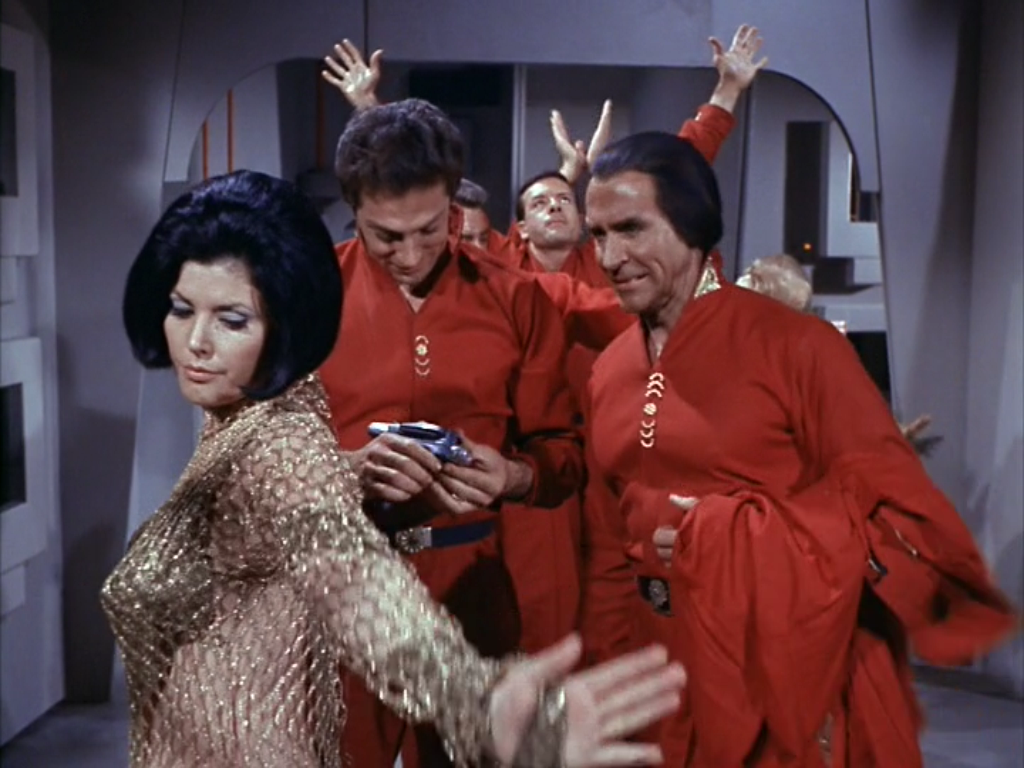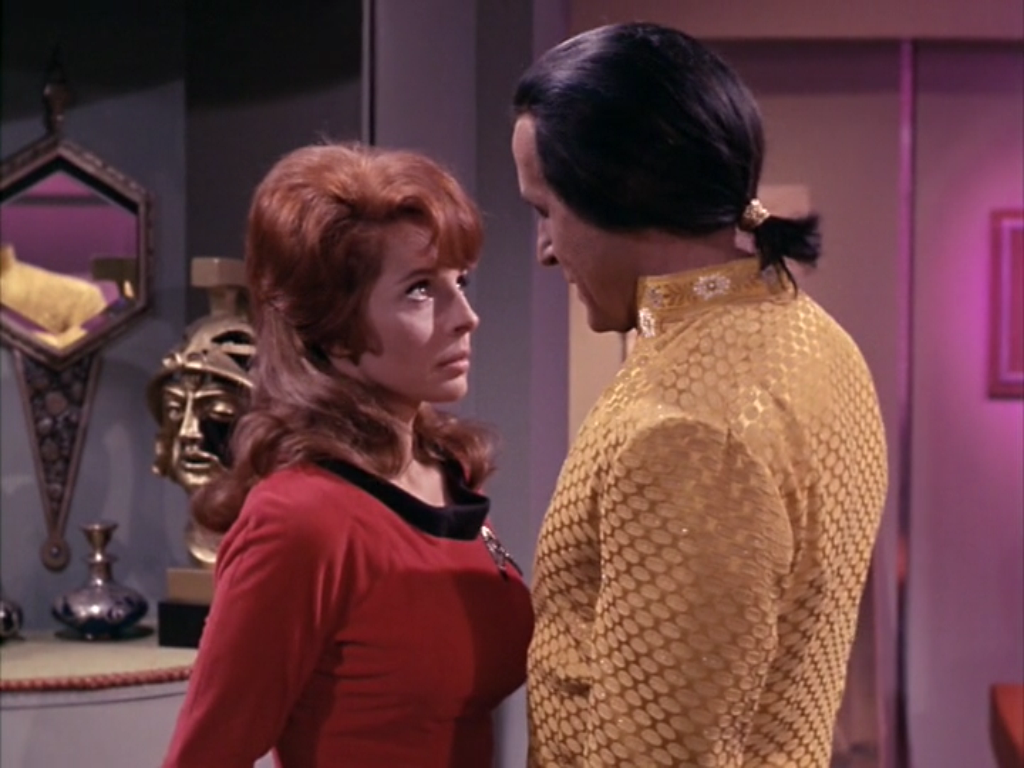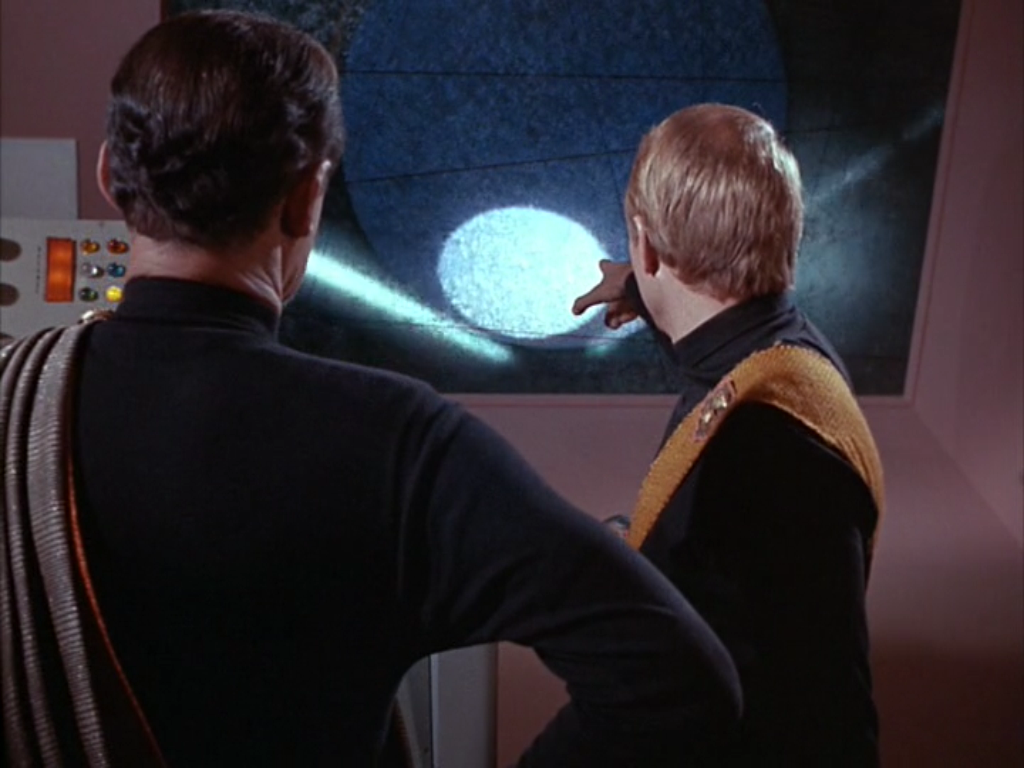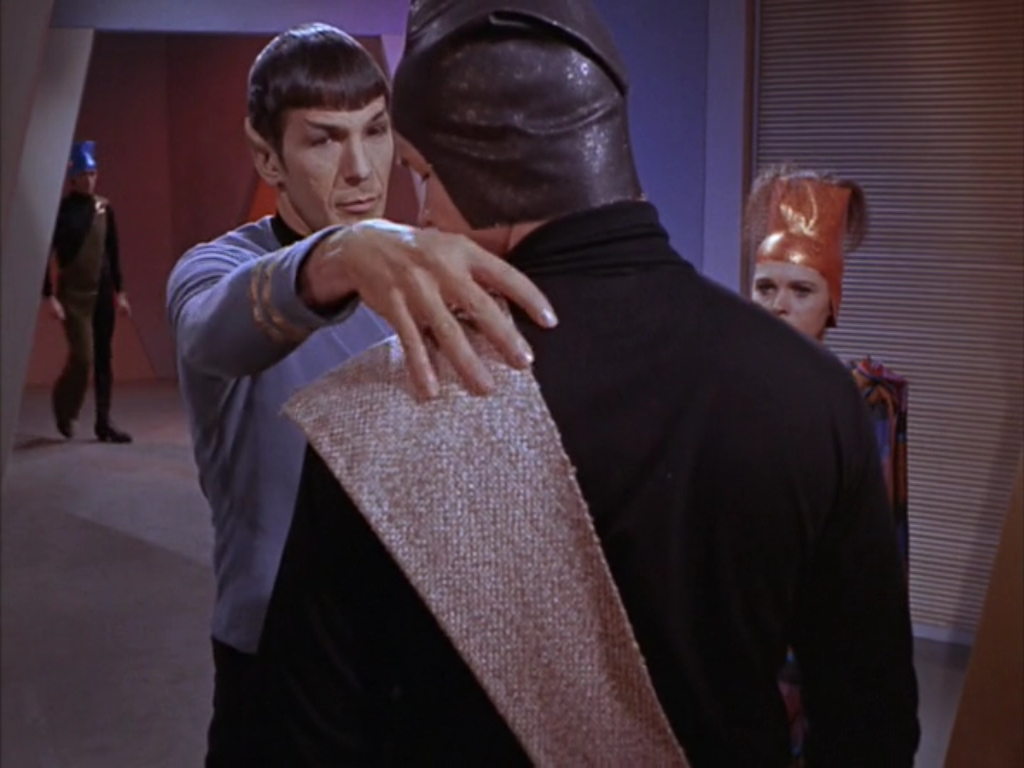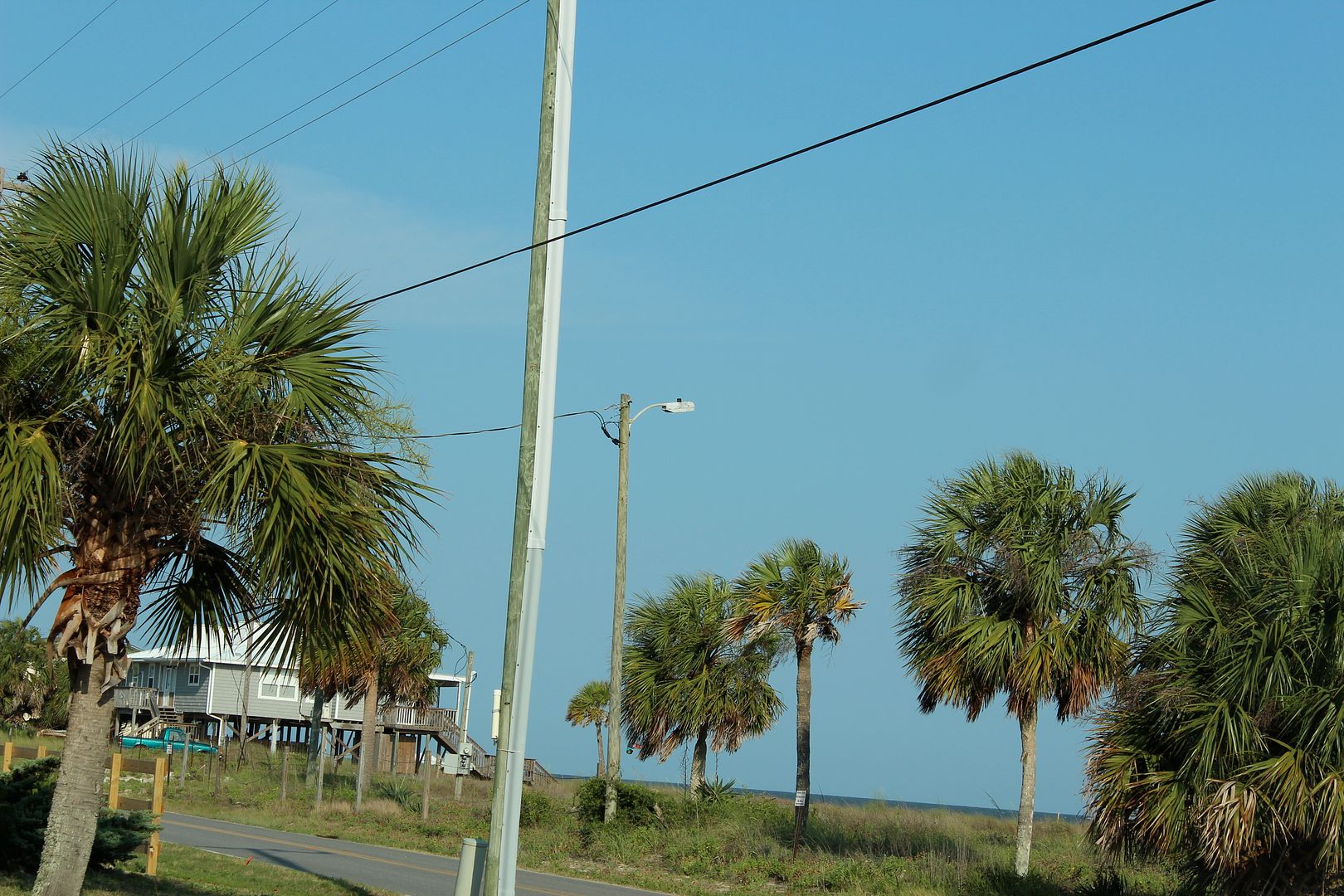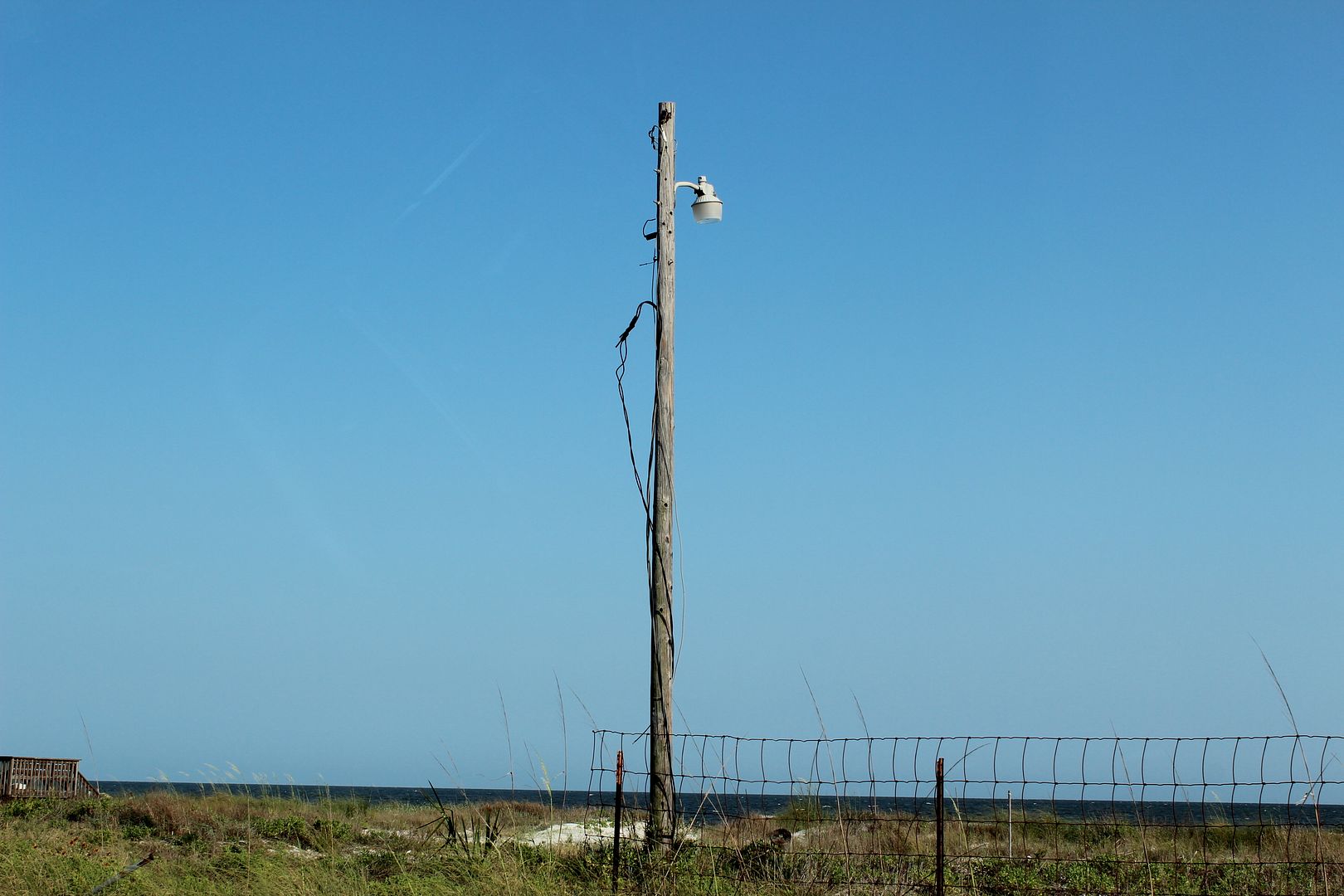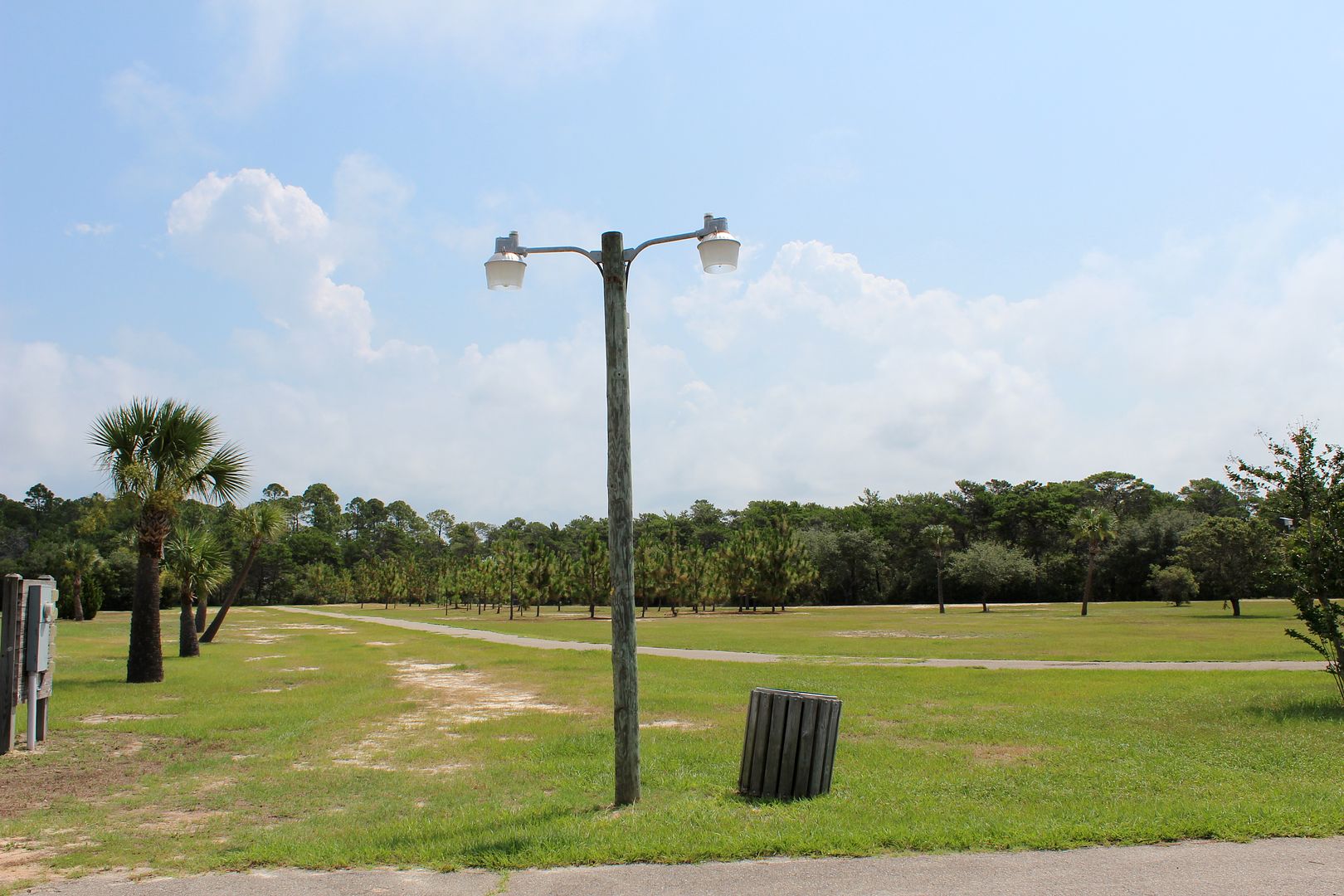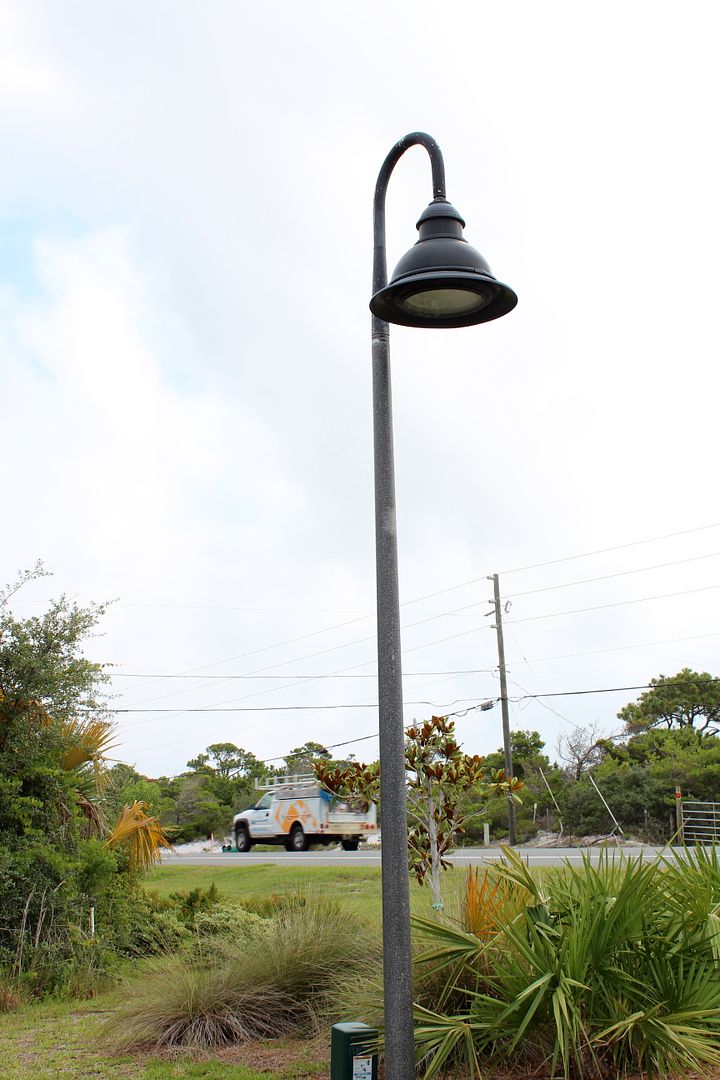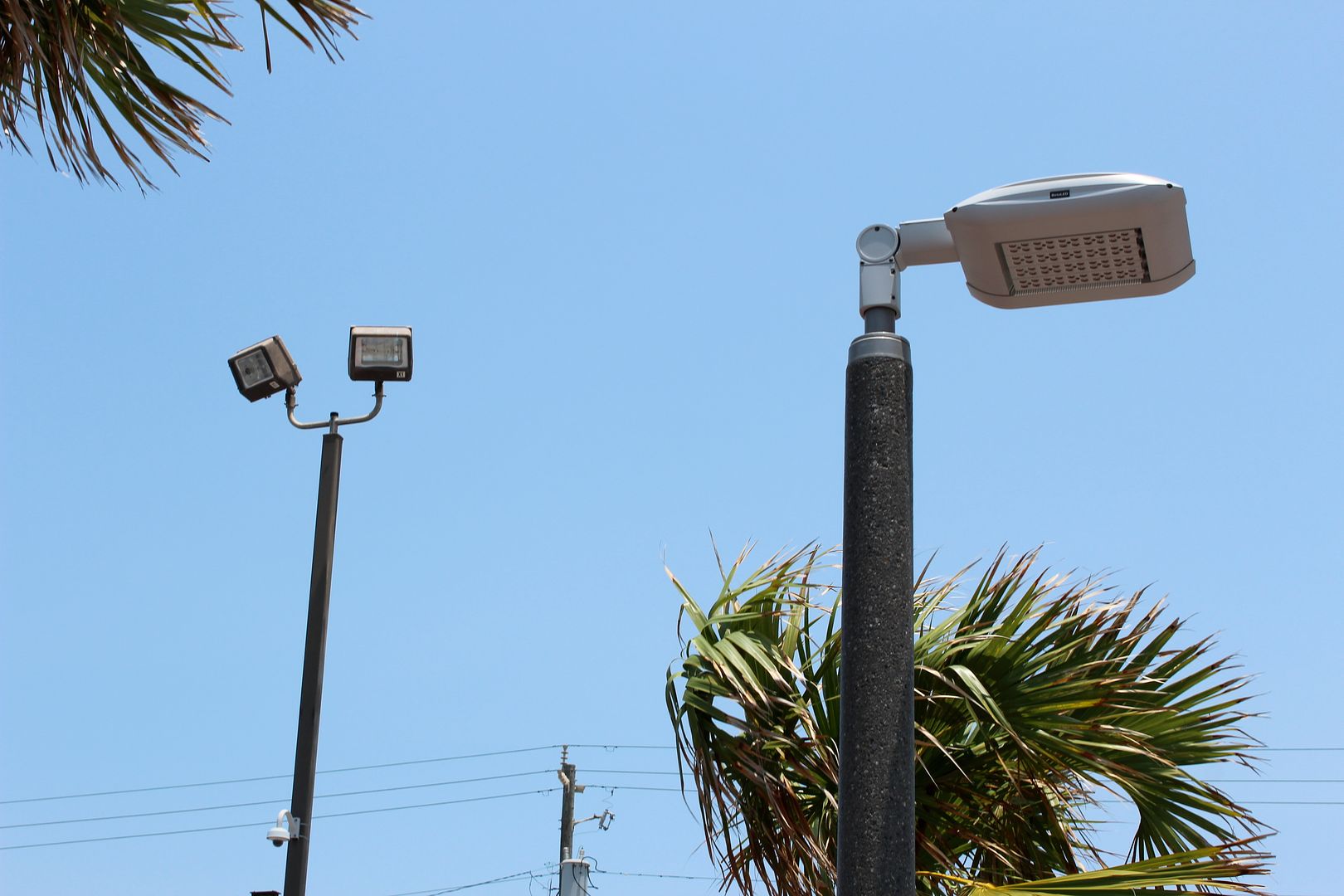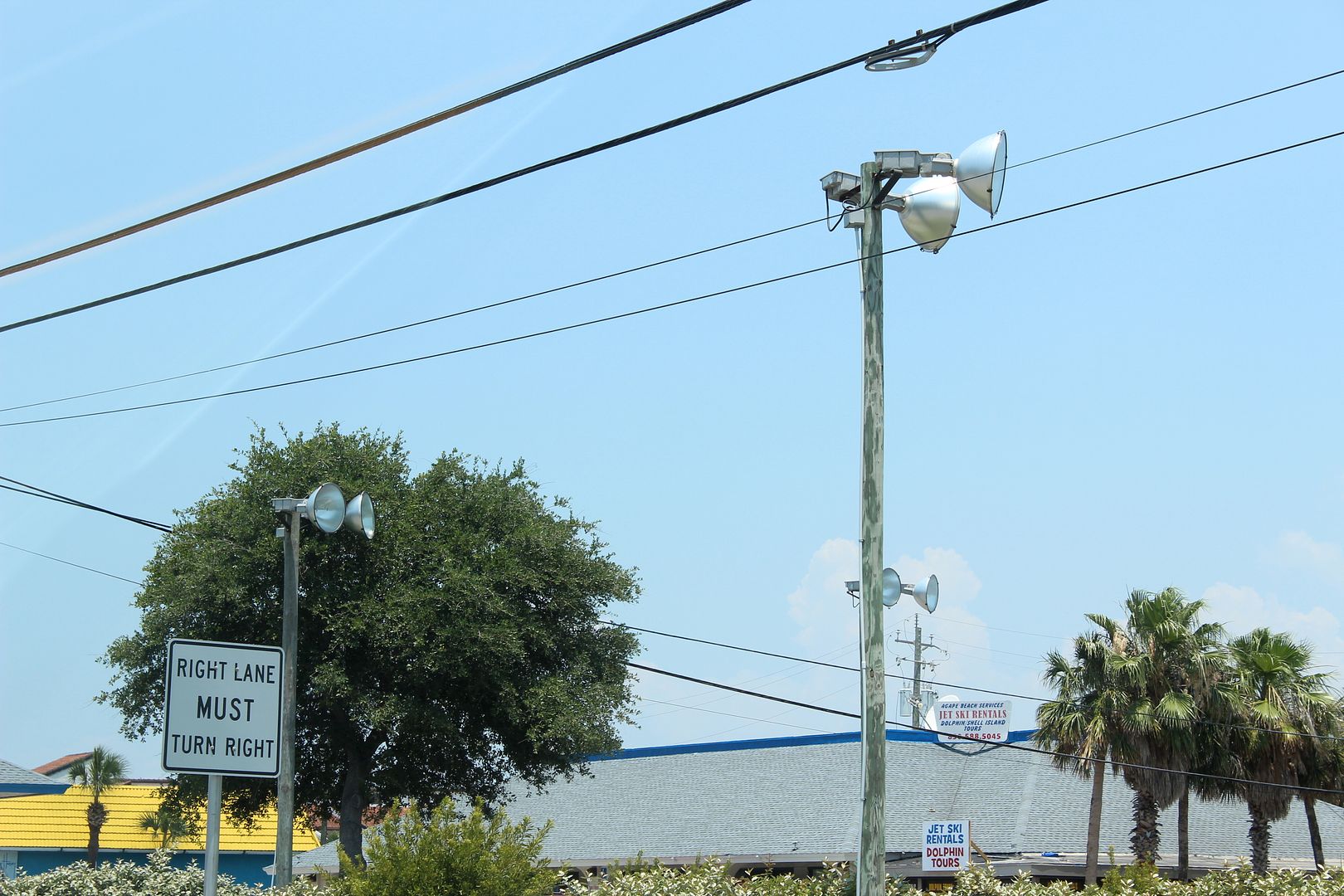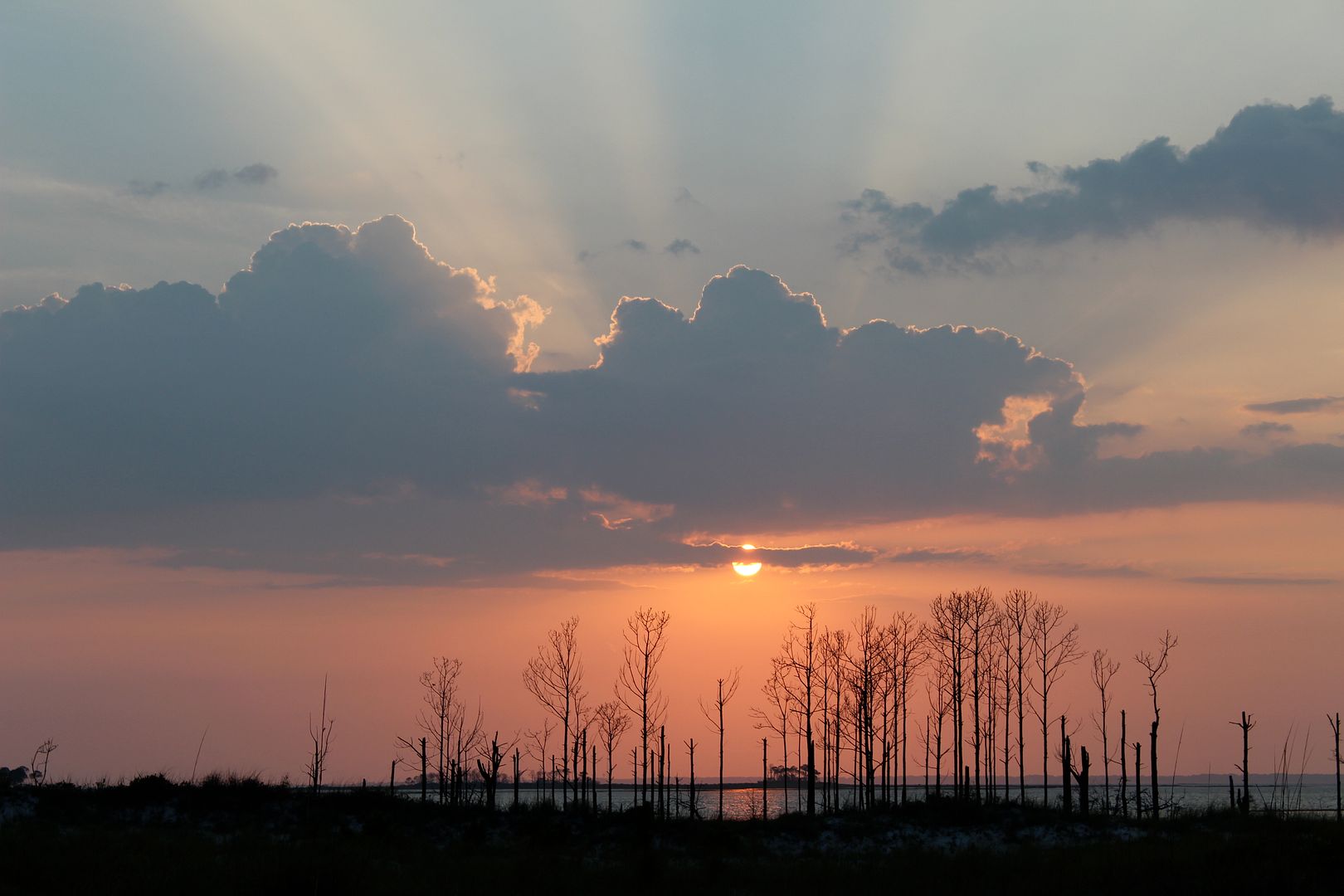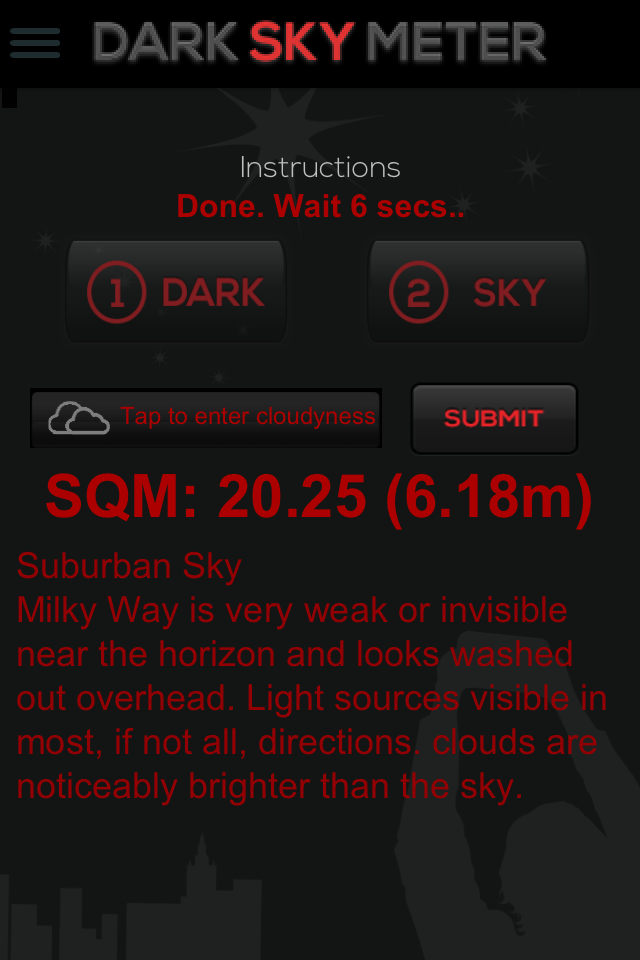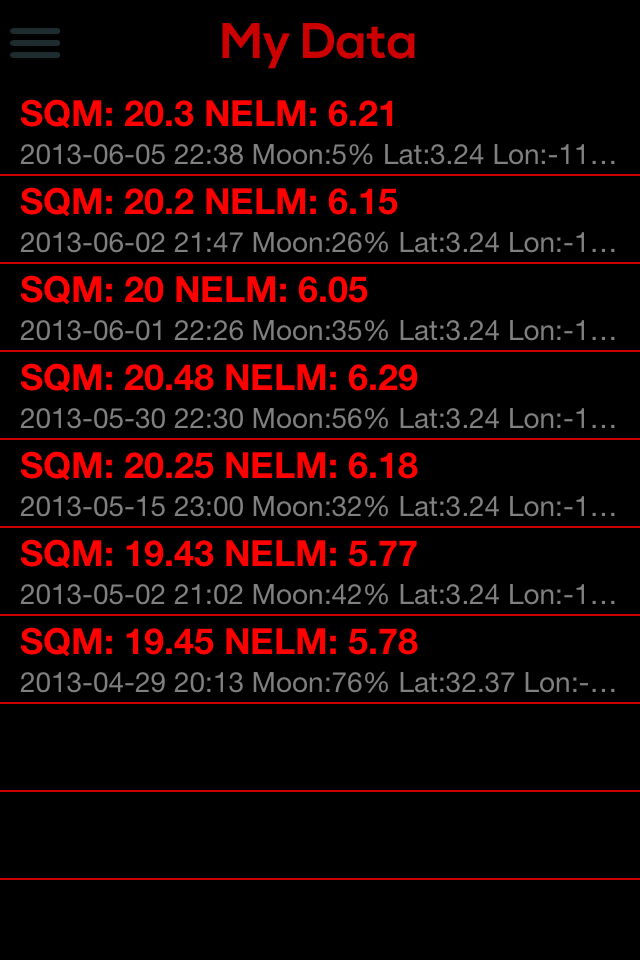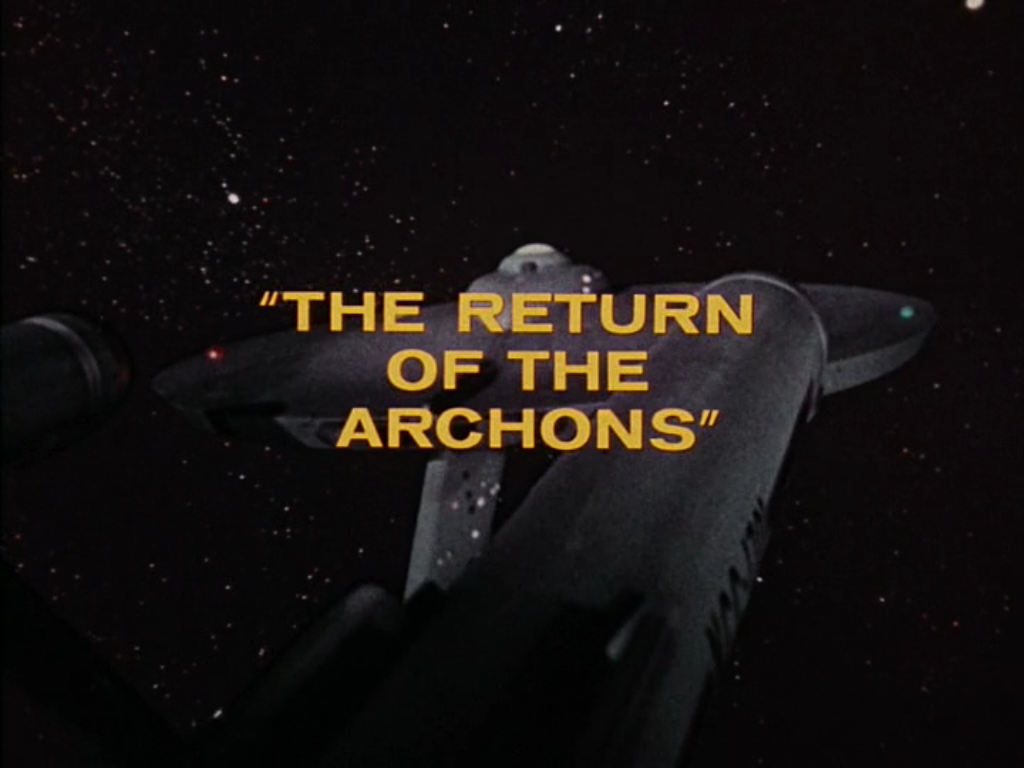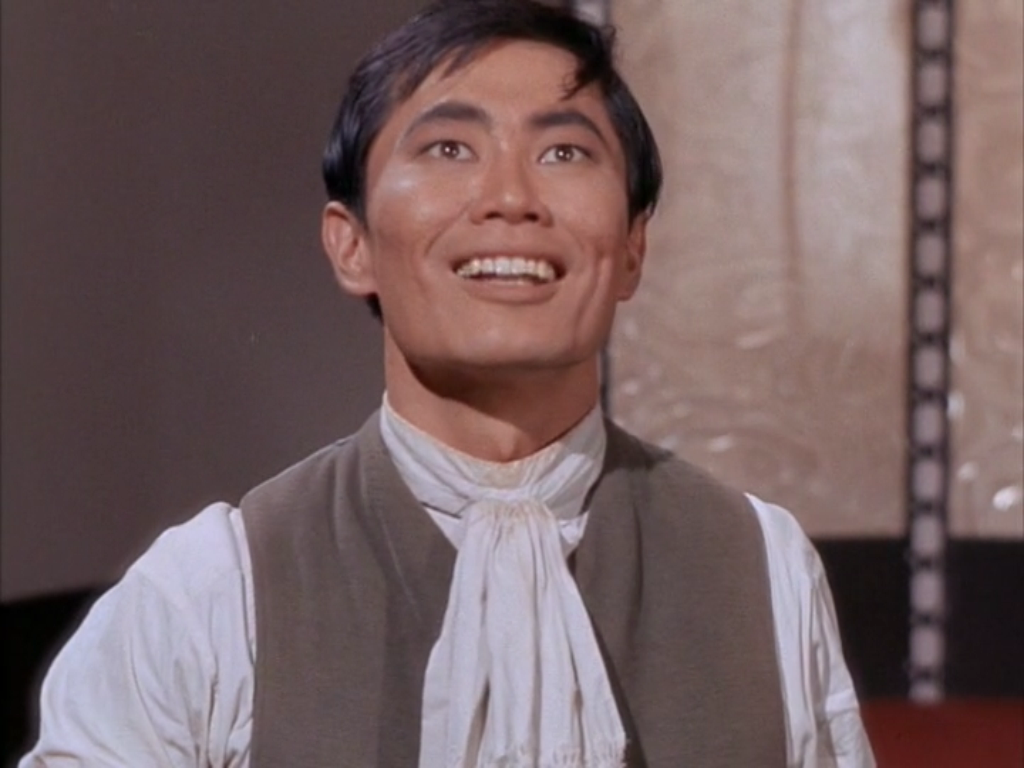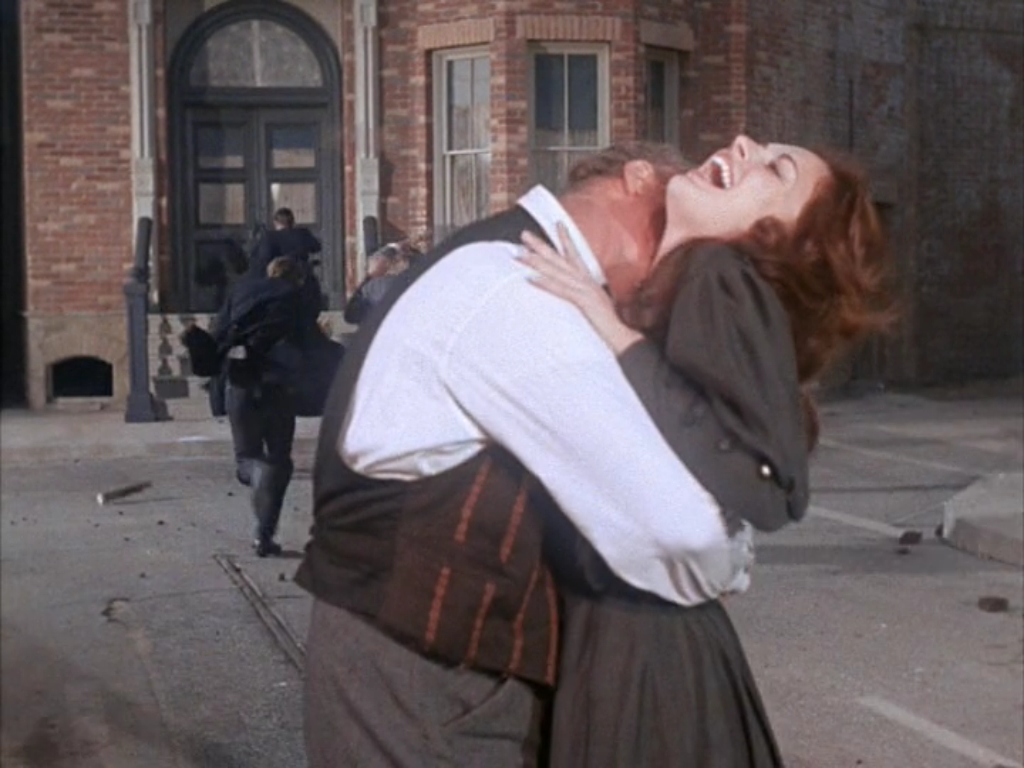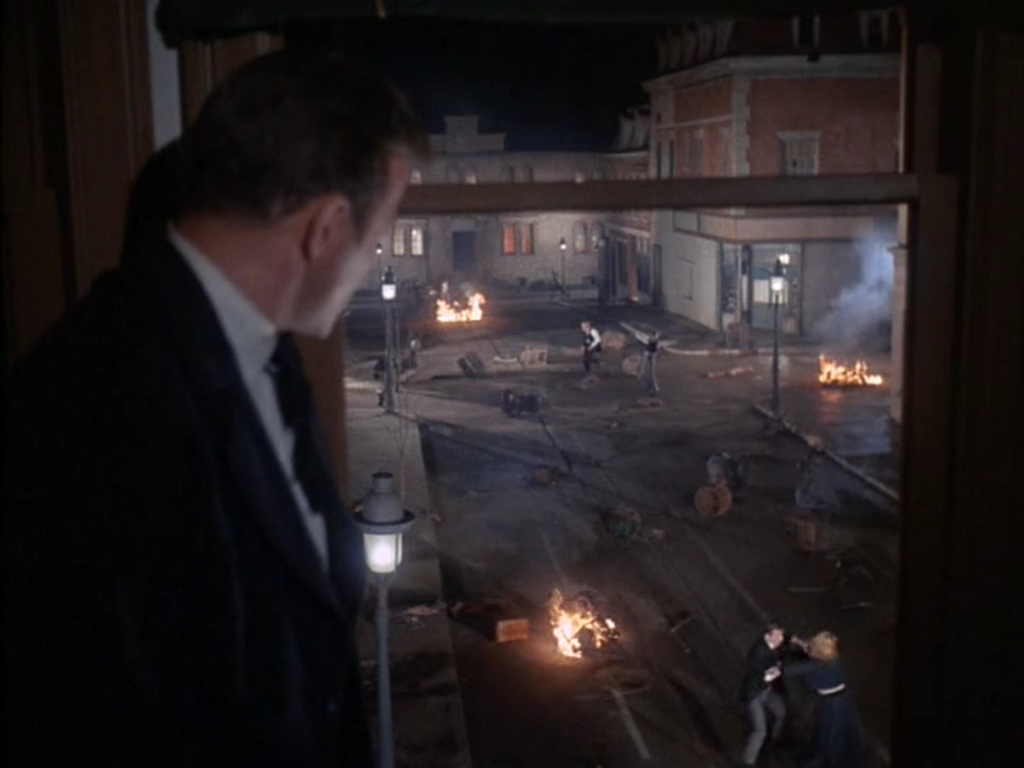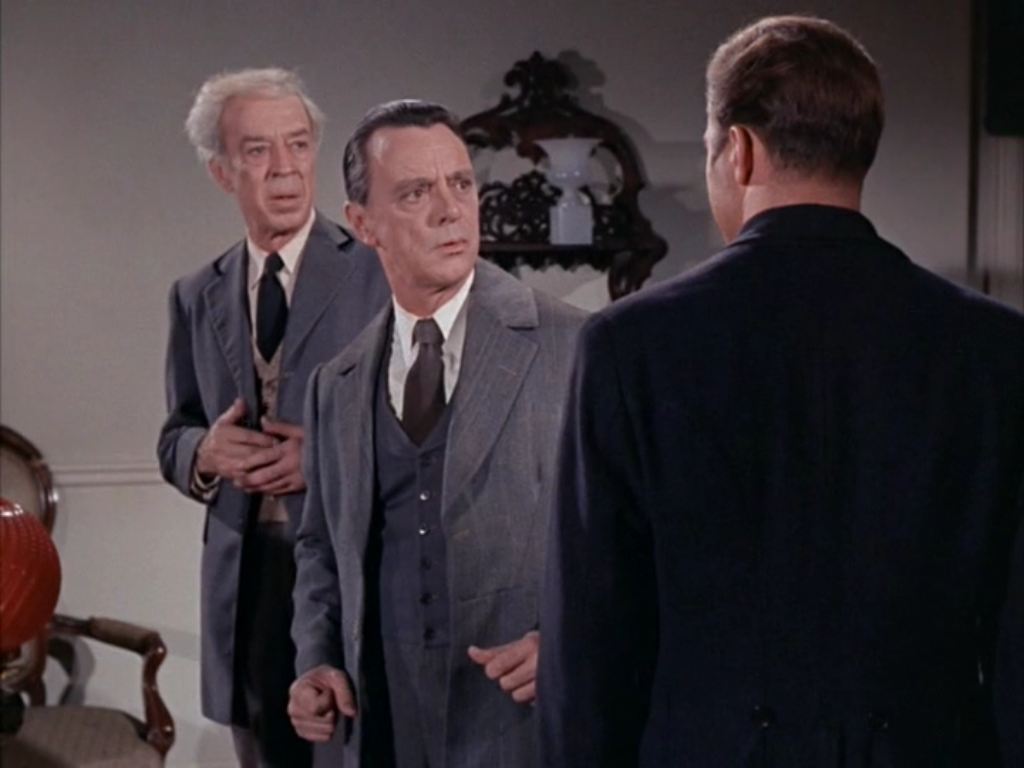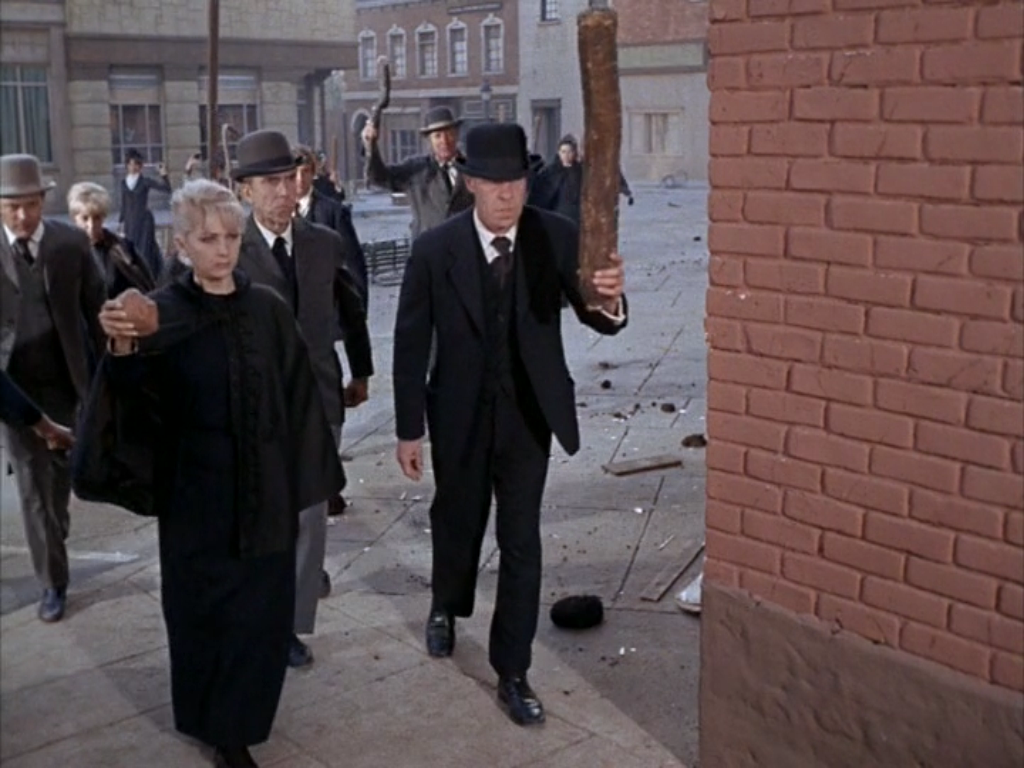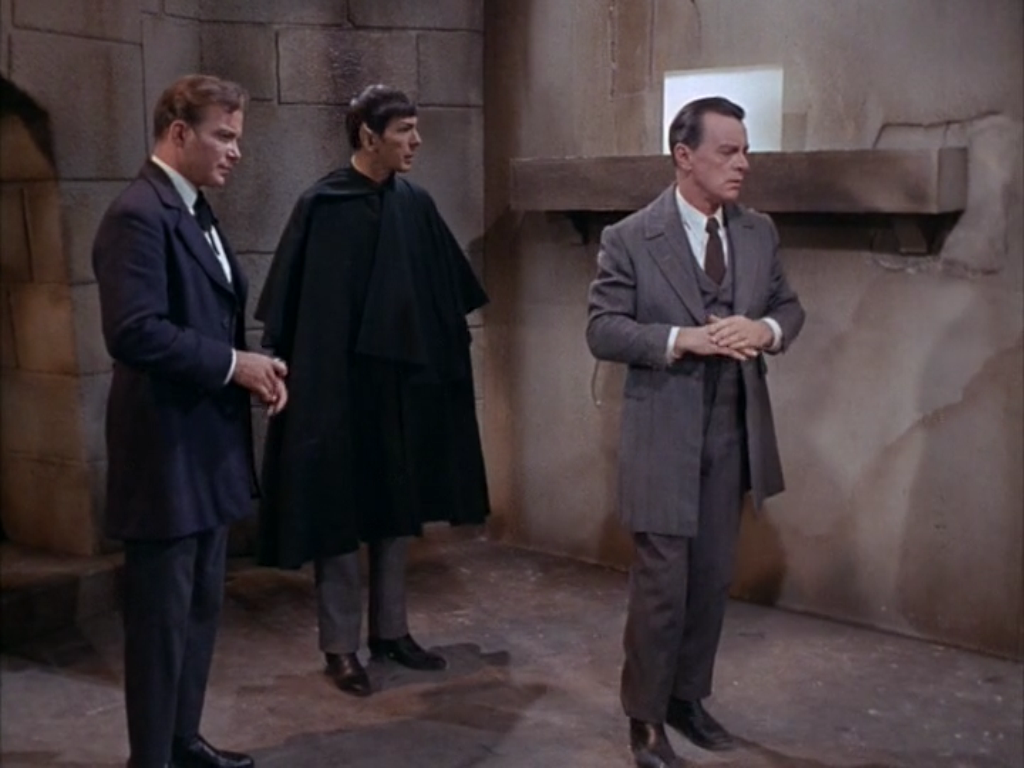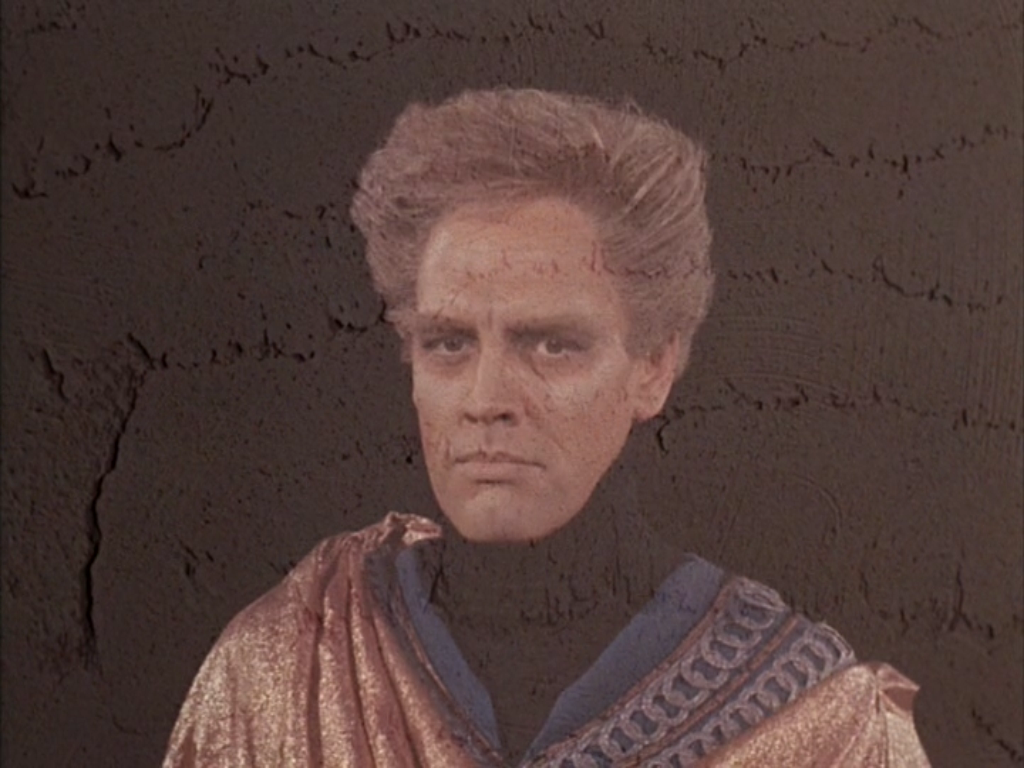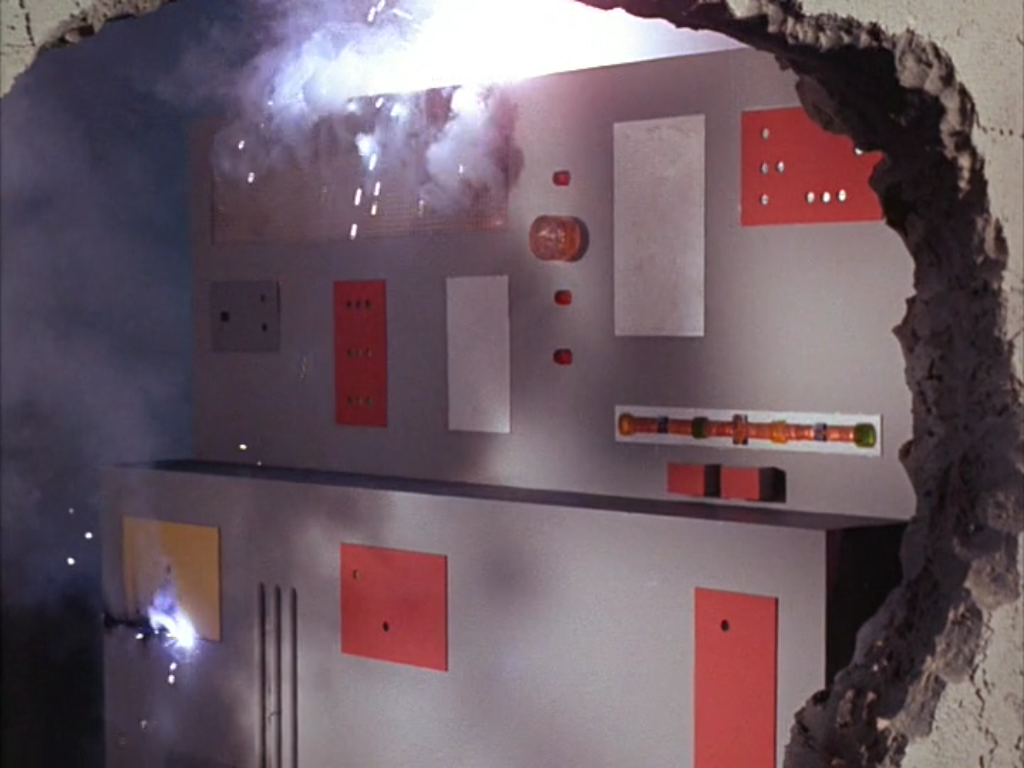It is time for another episode of
Star Trek. Today it is:
The episode begins scientifically on a bad foot. They are en route to star cluster NGC 321 to open diplomatic relations with the civilizations known to be there. Alas, NGC 321 is a real thing, it just happens not to be a star cluster. It is a galaxy. That's too bad as it would have been a relatively easy thing to get right and they didn't quite make it. There's another bad science moment which I'll get to later on.
On board is Ambassador Robert Fox, a man with an epic case of bags under his eyes.
Ambassador Fox is determined to open up diplomatic relations with the people of Eminiar VII and its neighboring planet, Vendikar. I'm not quite sure why Vendikar doesn't have a number.
Anyway, the
Enterprise is in orbit about Eminiar VII and, even though they refused contact 50 years ago, and, the two planets were then at war, and, the ship that first contacted them went missing, the ambassador insists that they beam on down. What could go wrong?
By the way, the missing ship was the
Valiant, which must be some kind of cursed name for doomed ships. It was also the
Valiant which went missing in
Where No Man Has Gone Before. That one vanished 200 years earlier. Note for future generations: if you get assigned to the
Starship Valiant, resign your commission.
Anyway, they leave the ambassador behind until it is safe for him and beam down in front of this awesome
matte painting.
I love the Space Needle-like structure, the inverted pyramid and how clean everything looks.
We soon meet Anan 7, leader of the High Council.
Anan's bags under the eyes are serious contenders, but don't quite rise to the level (or should I say sink to the level) of Ambassador Fox's bag. Anan explains that Eminiar is at war with Vendikar and has been so for 500 years.
Kirk and the landing party can detect no signs of war. Anan tells them that "
Casualties among our civilian population total from one to three million dead each year from direct enemy attack. That is one reason, Captain, why we told you to stay away. As long as your ship is orbiting our planet, it is in severe danger."
Ordinarily the proximity of the words "ship" and "danger" would get Kirk all worked up, but before he has a chance to react there's an attack from Vendikar. And its a doosie.
Anan reports that half a million people have just been killed. When the landing party sees no signs of an actual attack, Spock realizes that this war is being fought entirely with computers. As Anan explains, "
Captain, we have been at war for five hundred years. Under ordinary conditions, no civilization could withstand that. But we have reached a solution... Our civilization lives. The people die, but our culture goes on."
He then lowers the boom, "
Then you will recall I warned you not to come here. You chose to ignore my warning. I'm sorry, but it's happened...Once your ship was in orbit about our planet, it became a legitimate target. It has been classified destroyed by a tricobalt satellite explosion. All persons aboard your ship have twenty four hours to report to our disintegration machines. In order to ensure their co-operation, I have ordered you, Captain, and your party held in custody until they surrender. If possible, we shall spare your ship, Captain, but its passengers and crew are already dead."
Kirk and the landing party are taken prisoner. From the look on the face of the guard on the right, I am thinking that he would rather that Kirk was a prisoner of love.
Anan then tries to trick Scotty in to beaming down the entire crew for shore leave, but Scotty's not falling for that. Later the ship falls under attack from the planet from "
extremely powerful sonic vibrations. Decibels eighteen to the twelfth power."
Sigh. I am sure that someone thought it would be a cool weapon to shoot sound waves, but the big problem with that is that they don't propagate though space. At all. Oh, well. Yes,
Trek is more fantasy than actual science fiction, but I still love it. It is certainly better than the #$#@ that SyFy is cranking out these days.
Sharknado? Seriously? Sigh.
Then there's this bit which isn't consistent with
Trek at all. "
We can't fire full phasers with our screens up, and we can't lower our screens with their disruptors on us. Of course I could treat them to a few dozen photon torpedoes." This may be the only time it was ever suggested that they can't fire phasers with their screens or shields up. In fact, they do so all the time. Usually it is just the transporter than can't be used when the shields are up. But in a moment, they'll go ahead and use the transporter anyway.
The ambassador overhears Scotty threatening to fire photon torpedoes orders him to stand down. As Scotty says after the ambassador leaves the bridge "
The best diplomat I know is a fully activated phaser bank."
In a bit the ambassador calls down to Anan on the planet to start talks. He then orders Scotty to lower the screens, but Scotty wont budge. In spite of the screens staying up, the ambassador and his aide somehow manage to beam down.
Naturally, Ambassador Fox is immediately taken prisoner. Meanwhile the landing party escapes to destroy some of the disintegration chambers and Spock tells a lie.
"Sir, there's a multi-legged creature crawling on your shoulder."
But it is all good stuff. Soon Kirk confronts Anan 7 again and delivers the show's big anti-war message.
In spite of
last week's introduction of the Prime Directive, Kirk is going to bring down their entire system of war. As he says, "
Death, destruction, disease, horror. That's what war is all about, Anan. That's what makes it a thing to be avoided. You've made it neat and painless. So neat and painless, you've had no reason to stop it. And you've had it for five hundred years. Since it seems to be the only way I can save my crew and my ship, I'm going to end it for you, one way or another."
His plan is to stop their ability to wage war with computers and force them into the real, ugly thing.
Anan: "You realize what you have done?"
Kirk: "Yes, I do. I've given you back the horrors of war. The Vendikans now assume that you've broken your agreement and that you're preparing to wage real war with real weapons. They'll want do the same. Only the next attack they launch will do a lot more than count up numbers in a computer. They'll destroy cities, devastate your planet. You of course will want to retaliate. If I were you, I'd start making bombs. Yes, Councilman, you have a real war on your hands. You can either wage it with real weapons, or you might consider an alternative. Put an end to it. Make peace."
Anan: "There can be no peace. Don't you see? We've admitted it to ourselves. We're a killer species. It's instinctive. It's the same with you. Your General Order Twenty Four."
Kirk: "All right. It's instinctive. But the instinct can be fought. We're human beings with the blood of a million savage years on our hands, but we can stop it. We can admit that we're killers, but we're not going to kill today. That's all it takes. Knowing that we won't kill today. Contact Vendikar. I think you'll find that they're just as terrified, appalled, horrified as you are, that they'll do anything to avoid the alternative I've given you. Peace or utter destruction. It's up to you."
Ambassador Fox gets to work. Back on the bridge Spock and McCoy question Kirk's methods and he defends his actions by saying, "
They've been killing three million people a year. It had been going on for five hundred years. An actual attack wouldn't have killed any more people than one of their computer attacks, but it would have ended their ability to make war. The fighting would have been over permanently.... It was a calculated risk. Still, the Eminians keep a very orderly society, and actual war is a very messy business. A very, very messy business. I had a feeling that they would do anything to avoid it, even talk peace."
There you have it kids, war is bad, so don't do it.
Of course I agree completely. One of the many problems in the world today is that our political leaders are now totally cut off from the horrors of war. They can order an attack from their office and never have to experience or encounter the pain and suffering that result. I recently read the science fiction novel
Triggers by Robert Sawyer. I wont go into the details here (read it yourself!), but there is a scene in the book where a character gets the president of the United States to experience what it is like to have post traumatic stress disorder-to actually feel what war was like. It is something that I hope none of us has to go through, but an experience that many national leaders could learn from.
In conclusion,
A Taste of Armageddon is a solid first season episode. It has plenty of action, delivers a relevant social message and is fun.
Next up,
Space Seed. See you then.
